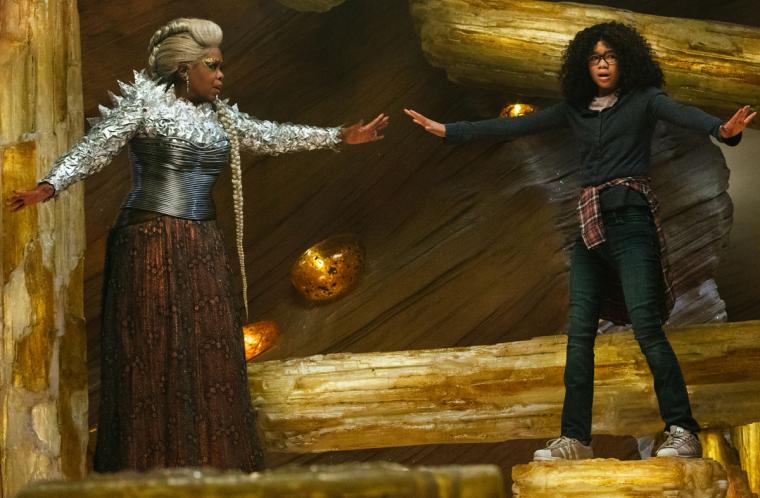
A WRINKLE IN TIME
Even if you're Steven Spielberg, Spielberg-ian whimsy is tough to pull off effectively, and Ava DuVernay's A Wrinkle in Time – the director's eagerly awaited adaptation of Madeleine L'Engle's cherished 1962 fantasy novel – most assuredly has its heart in the right place. If only it were clear where its brain was. I get absolutely no pleasure out of reporting this, but for a good two-thirds of this science-fiction-fueled kiddie flick, I stared at the screen with the kind of furrowed brow and slackened jaw that usually accompanies a catastrophic failure, wondering how so much money and talent was spent on something this simultaneously overscaled and underwhelming. The morals in this Wrinkle in Time are unimpeachable. The presentation, for most of its length, is excruciating.
Although I somehow made it through my youth (and beyond) without having read L'Engle's book, I can't imagine that any of the film's considerable problems are the fault of the original author, and her basic story structure holds up just fine. Four years after the disappearance of her father (Chris Pine) – a physicist who mysteriously vanished while researching the space/time continuum – middle-school student Meg Murry (Storm Reid) is visited by a trio of space travelers (Reese Witherspoon, Mindy Kaling, and Oprah Winfrey) who inform the girl that her dad is still alive. Along with her younger brother Charles Wallace (Deric McCabe) and friendly schoolmate Calvin (Levi Miller), Meg consequently embarks on an interplanetary journey to find him, and in the process, eliminate an evil controlling force known only as IT – a being, as we're told and shown, apparently responsible for everything from war to bullying to bulimia. So basically, at least in this rendering, A Wrinkle in Time is like an updated Wizard of Oz with Meg as Dorothy, her dad as Kansas, and a malevolent space brain as the Wicked Witch of the West. Works for me.
What didn't, however, was almost everything else in sight, although I do feel it necessary to deliver a few compliments. Reid is a lovely, grave audience surrogate whose focused gaze suggests deep intelligence, and she feels like the believable child of a happy couple raised by Pine and (as Meg's mother) Gugu Mbatha-Raw, both of whom, in their few scenes, are quietly emotional and touching. Cinematographer Tobias Schliessler doesn't make the on-screen colors pop so much as explode, particularly in the lush greens of the otherworldly hills and the flying floral arrangements on the planet Uriel. There's some solid tension, and a delightfully creepy performance by McCabe, in Meg's final confrontation with IT. There are a few giggly moments of threateningly choreographed suburban conformity, suggesting that even if DuVernay never becomes the Spielberg of The BFG, she might be able to pull off the Spielberg of A.I. And while there's no earthly way to miss them, the movie's themes on inclusivity, perseverance, faith, tolerance, and more might very well speak to the film's target demographic – if, unlike me, they're able to make it through the entire movie without nodding off.
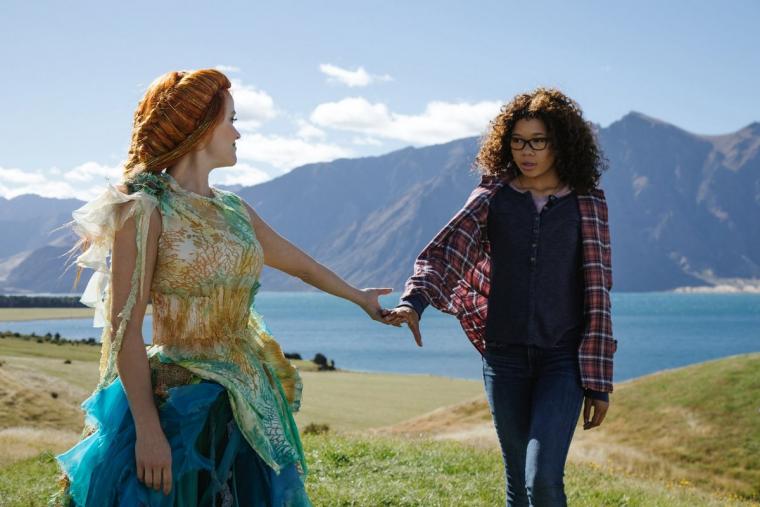
But yes, the maddeningly forced playfulness and blatantly stated Life Lessons and handful of awful performances did make me briefly conk out before the film's 40-minute mark. And after I regained consciousness, I was less embarrassed than angry that my unintended nap didn't last longer. I was pretty sure I'd had my fill of cutesy in learning that our bedazzled space travelers were named Mrs. Whatsit, Mrs. Who, and Mrs. Which. (Okay, so I guess one problem, or rather three problems, can be directly attributed to L'Engle.) But Witherspoon plays Whatsit as an aggressively chirpy, obnoxious sorority sister – a gaudily dressed Elle Woods on amphetamines. Kaling's Who, for most of her screen time, merely recites one-liners from great thinkers of history (among them Shakespeare, Lin-Manuel Miranda, and Chris Tucker), just like Michael Jackson's Scarecrow endlessly producing fortune-cookie wisdom in The Wiz. And Oprah is Oprah with a skyscraper-sized “O.” (Her first scene even makes the performer herself skyscraper-sized.) Dispensing platitudes with grandmotherely warmth and staggering condescension, Winfrey is treated abysmally by the script, DuVernay's conception of the character, and perhaps most especially Which's makeup, arriving in a series of ill-considered shades of shimmery lipstick, one of which makes her look as though she's just finished eating a powdered doughnut.
But I haven't even gotten to Zach Galifianakis as a fey astral-medium, and Michael Peña as a satanic beach-comber, and Miller's drab über-sensitivity, and the caricatured middle-school teachers (André Holland's decent principal notwithstanding), and Mrs. Whatsit changing her wardrobe by spinning in a circle à la Lynda Carter's Wonder Woman, and Witherspoon as an airborne CGI-lettuce salad, and the repeated shrieks of “Charles Wallace!” that made me curse L'Engle for naming him that, and … . Enough. Take the kids if you must, but A Wrinkle in Time proved an incredibly depressing waste of mine.
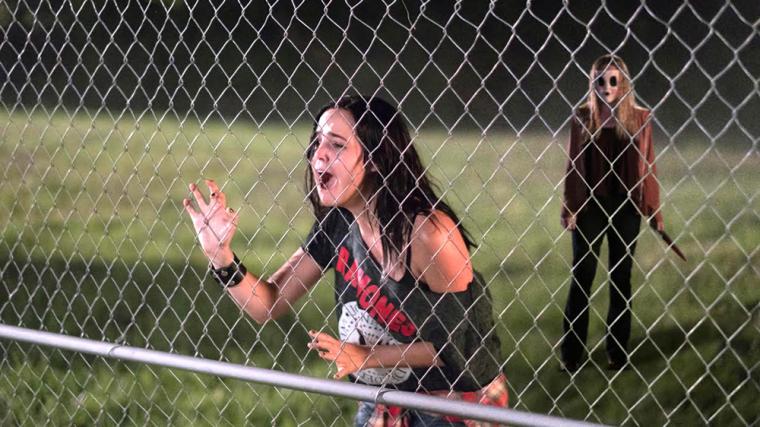
THE STRANGERS: PREY AT NIGHT
Released in 2008, writer/director Bryan Bertino's The Strangers remains the single most terrifying horror film I've seen this millennium – a phenomenally well-executed exercise in screw-tightening made more haunting and memorable by its perversely nihilistic bent. (When you can't trust a dewy Liv Tyler to make it out alive, what can you trust?) Given its eerie tableaux, marvelously sustained tension, and nightmarish trio of serial killers, I had so much stomach-clenching fun at Bertino's minimally plotted outing that I was actually really looking forward to a sequel, which we finally have in director Johannes Roberts' The Strangers: Prey at Night. To be sure, 10 years is a long time to wait for a follow-up. But you won't be hearing any complaints from me, because it turns out that one of these things per decade is about all my nerves can take.
All right, I do have one complaint, as Roberts' scare flick doesn't at all benefit from employing the same “the following is based on real events” title card that preceded the original Strangers. You could mostly buy that in the 2008 film, but considering the outré flourishes provided by screenwriters Bentino and Ben Ketai, it's a lot tougher to locate the realness in this continuation's many geographic contrivances and, especially, its flaming car straight out of Stephen King's Christine. These prove, however, to be minor issues in a movie filled with major pleasures. Doubling the number of potential victims, Prey at Night finds a tense, unhappy family of four (mom Christina Hendricks, dad Martin Henderson, and teen kids Bailee Madison and Lewis Pullman) interrupting their cross-country road trip for a night in a remote mobile-home park where – wouldn't ya know it? – the masked psychopaths from The Strangers have taken residence. Plot-wise, that's about it: Just add corpses and smashed cell phones, shake, and stir.
God knows I left shaken and stirred. Much of the film's power stems from the stunning effectiveness and truthfulness of its central acting quartet, and given the complex, empathetic portrayals by Hendricks, Henderson, Pullman (Bill's son), and Madison (a heartbreakingly adorable child actor who has matured into her teen years beautifully), I would've happily watched these four in a 90-minute domestic drama wholly free of murderers. But anyone entering the film, of course, knows that's decidedly not in the cards, and director Roberts stages the clan's escalating peril with a viciously keen eye and ear. He's particularly inventive in his use of slow and quick zooms, and films the movie's many shadowy encounters so you're forced, sometimes against your will, to really stare into the hideous blackness for killers you're almost sure are there. Arresting and fiercely frightening attack scenes are staged in locales as cramped as a mobile-home bathroom and as relatively expansive as a brightly illuminated outdoor-pool area. And as with The Strangers – and, admittedly, most every other horror film of the past 20 years – its sequel gets extraordinary mileage out of innocuous pop songs that might now forever haunt your dreams. (Sorry, Bonnie Tyler: Your “Total Eclipse of the Heart” is now officially scary AF.) It was wrenching, it was cruel, it was frequently tough to watch, and, in the end, The Strangers: Prey at Night was a total blast. Here's hoping there's a third one ... in 2028.
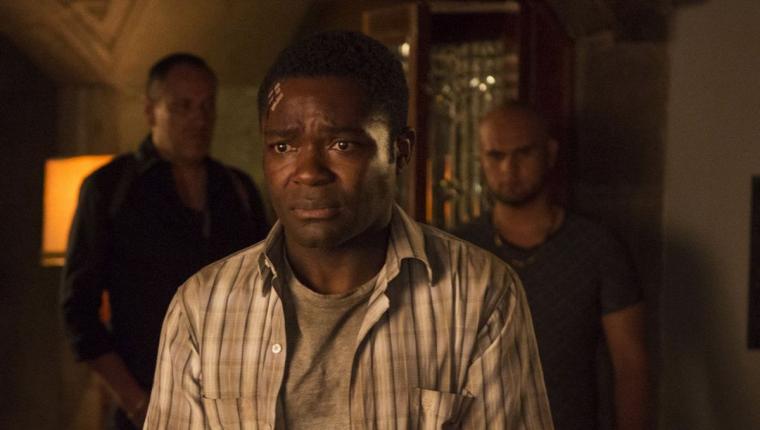
GRINGO
If you're a screen actor and you spend several years playing Dr. Martin Luther King Jr. (in Selma), a murderer with a hostage (in Captive), an assailed king of Botswana (in A United Kingdom), and Inspector Javert (in the BBC's forthcoming Les Misérables mini-series), it would be understandable if it took several more years to locate, or re-locate, your funny bone. But in director Nash Edgerton's Gringo, David Oyelowo, thankfully, is funny from the start – far more so than the competent but oddly out-of-date comedy thriller he's starring in.
The film casts Oyelowo as a beleaguered, broke executive at a Chicago-based pharmaceutical company who winds up faking his own kidnapping, and being mistaken for a drug kingpin, during a stay in Mexico, and it was written by Anthony Tambakis and Matthew Stone – two screenwriters in their 50s. Ordinarily, I wouldn't make a point of the authors' ages. But I have to ask: Was this project something the pair collaborated on, say, 20-odd years ago, when we were constantly being inundated by “ironically” violent, profane, and verbose hipster indies that wanted to be the next Pulp Fiction? Because it's kind of all here: the white-bread 1-percenters (embodied by Charlize Theron and the director's brother Joel Edgerton) whose shiny offices are dens of sex, drug deals, and rampant cursing; the Mexican druglord (Carlos Corona) who shoots those who prefer Sgt. Pepper's Lonely Hearts Club Band to Let It Be; the eccentric contract killer (Sharlto Copley) who meditates on whether Judas or Peter was the bigger turncoat; the wide-eyed blond ingénue (Amanda Seyfried) who becomes accidentally mixed up in the action; the unfaithful spouse (Thandie Newton); the random British guy (Harry Treadaway); the bullets to the brain; the severed toe.
None of it is terrible, and Theron pulls off a truly impressive acting feat by playing a deeply unpleasant figure without, in the process, coming off as deeply unpleasant herself. (She's actually responsible for the two best scenes in the film, one of them a terrific fighting-back-tears monologue performed into a car's rear-view mirror.) Yet beyond Oyelowo, playing his character's mounting incredulity and thick Nigerian accent to winning effect, there doesn't seem to be any reason for Gringo to exist even on the level of throwaway entertainment, and it made perfect sense to me when the film failed to crack the box-office top 10 this past weekend. Perhaps people didn't know the movie existed. But I'm guessing that at least a few did, and probably thought they already saw it back in 1996.
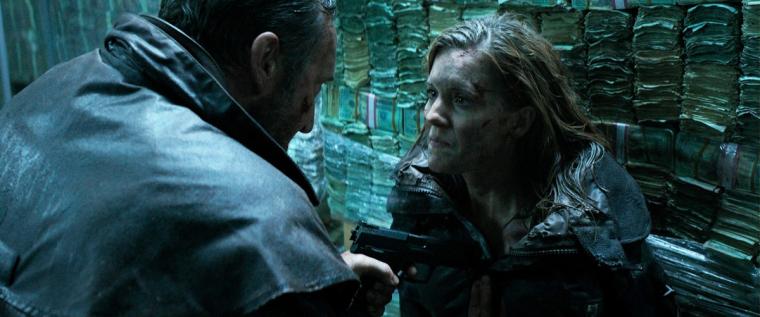
THE HURRICANE HEIST
Directed by Rob Cohen and co-written by four presumably grown-up screenwriters, the disaster thriller The Hurricane Heist is kind of like Sharknado meets … . Well, no, that's really it – it's kind of like Sharknado, only without the sharks. There are so many current platforms for truly terrible movies that finding one at the cineplex is becoming rarer and rarer, which is one of the main reasons I can't fully hate Cohen's tale of a U.S. Treasury robbery designed to transpire during a Category 5 storm. I'm almost impressed that a work this ludicrous found its way into wide release.
You know the film's casting director probably got a lot of “Thanks, but no thanks” responses given that the top-billed stars are Maggie Grace, Toby Kebbell, and Ryan Kwanten, and most episodes of Scooby-Doo feature tighter, more believable narratives than the storytelling on display here. (The film's many “No, I'm the one in charge!” twists are so laughable that I half-expected our heroes to pull off the chief bad guy's mask at the end, revealing that it was Tom Cruise's Ethan Hunt the whole time.) Yet even though the dialogue is atrocious, and much of the supporting acting distractingly bad, and the weather-related chaos unfathomably silly – with characters chasing one another on foot during gales that are lifting cars from the streets – I won't pretend that The Hurricane Heist wasn't a frequent hoot.
Kebbell's transformation into a meteorologist superhero was good for several chuckles, particularly when he felled an assailant by whipping hubcaps into the winds, and the dispatching of two henchmen through a shopping mall's glass ceiling was so over-the-top goofy that I wanted to applaud. Ralph Ineson, whose growling baritone makes Vin Diesel sound like Reese Witherspoon, barks his lines with fervor and gives great Bond-villain glower. The largely cheesy effects have some charm; Grace, who's both warmer and more authoritative than usual, has an unexpected surfeit of it. And I really can't thank the filmmakers enough for delivering the action-blockbuster scene I've waited for my entire life: our leads, after untold hours of punishing activity and endless driving, making a pit stop because they desperately need to pee. Leave it to a movie as ridiculous as The Hurricane Heist to finally produce the genre's most relatable moment.










